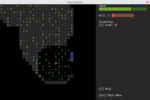The Biggest Ideas In The Universe!
video, review, science
This was one of the best birthday presents ever. On 24th of March, Sean M. Carroll released the first episode of a series called The Biggest Ideas In The Universe:
It’s a series of videos (and follow-up Q&As) going over some of the most important ideas in modern physics. Each video is dedicated to a topic (such as Conservation, Entanglement, Gravity or Fields) and it’s a deep-dive lasting anywhere from one to two hours.
These videos are aimed at a lay, but interested and dedicated public. They occupy the vast chasm between the popular-level explanations with their misleading rubber-sheet analogies and "no maths allowed" attitude and the impenetrable world of notation, proofs, papers and homework assignments that is the academia.
I’ve long felt there is a niche in diving deep into a topic — even dropping into the math where necessary to illustrate something — without going all the way into the university-level "spend four years solving problems" endeavour.
Carroll comes in and does just that.
Where analogies suffice, he uses analogies. Where they don’t he’ll drop down to the maths. Simplifying it, sure, not bothering with details, but showing enough to at least build a better intuition.
This is in no way a replacement for an uni degree, but if the popular science leaves you wanting, it’s the perfect next step.
It also provides a really rare insight into what Physics at the academic level actually is.
What are genuine problems and open questions (as opposed to what the public is told are the problems & questions), what are people working in, what thought processes do they follow.
I feel I have a much better understanding of quantum mechanics and the special & general relativity. That much was expected — it was obvious Carroll was going to talk about those.
But here are the things I understand much more now that I did not expect:
- (spontaneous) symmetry breaking
- forget yer Bullet Clusters and rotating galaxies, the best evidence for Dark Matter are the perturbations in the cosmic microwave background
- what’s really behind the Many-Worlds interpretation of Quantum Mechanics
- I knew the basics here, but not a lot of the project of mapping it onto the real world
- formulations of the famous theories
- e.g. what does the GR equation look like and what do the terms stand for
- same for QM
- A lot of the time, cosmologists operate within so-called natural units where you set the common physical constants equal to 1.
In other words: c = ℏ = k = 1.
Where:
cis the speed of light in the vacuumℏis the Reduced Planck constantkis the Boltzmann constant and
I had no idea you could do that! It’s kind of obvious now — you can just choose your units. For example, why would you insist on the speed of light in vacuum being ~300 000 kilometers per second when you can just set it to 1 light second per second. And so on.
I mean mind fucking blown, seriously.
I was also amazed by how much of this is high-school math! The vast majority of the time, you’ll be using functions, derivatives, complex numbers, matrices and integrals.
Even quantum mechanics is just vectors, complex numbers and functions.
Of course the math gets really complex, but still.
General Relativity is something else, though. There you’ve need pretty complex notions of curved-space geometry (which bent my mind as much as it did the space), topology and symmetries. All that was new to me and I still don’t feel I’ve got anything resembling a firm grasp.
Add matrices-within-matrices to the mix and yea GR is a pretty wild ride.
It’s not a relaxing journey. You need to pay attention not mindlessly checking the phone. But yeah, I feel a connection to the universe that I did not have before.
It is (to date) also one of the best things to come out of this pandemic.

